RED III
What is the EU Renewable Energy Directive?
The Renewable Energy Directive is designed primarily to promote the use of energy from renewable energy sources in different sectors to increase the use of energy from renewable energy sources to combat climate change, protect the environment and reduce the EU’s energy dependence.
The EU has set targets to reduce greenhouse gas emissions, to meet the 2015 Paris Agreement and to implement the EU’s climate and energy policy framework: The European Green Deal.
The European Green Deal aims to achieve a climate-neutral Europe by 2050. An important part of achieving the targets set is the “Fit for 55” package, which outlines the different actions on this pathway (including the Renewable Energy Directive, LULUCF, Energy Efficiency Directive, etc.).

Why choose us
Our advantages
Whether it is RED III, EUDR or any other regulation, understanding, interpreting, and using them is part of our daily work.
If you have any problems interpreting the regulation, contact us - we'll try to help.
Our portfolio of services includes a variety of certification schemes that strive to meet RED III requirements. We offer information seminars on RED III and the different certification schemes to raise awareness.
What does the EU Renewable Energy Directive cover?
The Renewable Energy Directive regulates the development of renewable energy in the European Union, sets targets and frameworks for Member States, and ensures that the transition from fossil fuels to renewable energy sources takes place in a coordinated, sustainable and fair way.

RED III (Directive (EU) 2023/2413)
In view of the need to accelerate the EU’s transition to clean energy, the Renewable Energy Directive was last amended in 2023. The new amended Directive (EU) 2023/2413 (RED III) entered into force on 20.11.2023 and the compliance obligation started on 21.05.2025.
With the entry into force of RED III, it will be specified:
- renewable energy share (new target of 42.5% by 2030);
- sectoral mandatory targets;
- rules to simplify licensing and accelerator areas;
- clearer definitions and binding targets for renewable fuels of non-biological origin (RFNBO);
- stricter requirements for biomass sustainability and reporting;
- obligations on countries.
Who is affected by the EU Renewable Energy Directive?

If you are dealing with:
- biofuels, bioliquids and/or biomass fuels (e.g. forest-based biomass, agricultural biomass, waste and residues);
- renewable fuels of non-biological origin (RFNBO) (e.g. hydrogen, synthetic fuels (e-fuels));
- recycled carbon-based fuels (RCF).
and you produce electricity and/or heat from the above sources, fuel for transport, you may be subject to different requirements under the Renewable Energy Directive.
How to prove compliance with the Directive?
The Directive is addressed to EU Member States, which in turn must implement the related requirements through legislation. To understand which part of the Directive applies to you and what the requirements are, it is necessary to understand what you do, and to which sector your production is directed.
Depending on the sector in which you operate, it may be possible to ensure compliance within your own organisation by setting up an appropriate management system and/or by using various third-party certification schemes.
The certification schemes we offer, which cover the RED III requirements, are:
- PEFC
- SURE
- ISCC
- SBP
.
How can we help you?
As a certification body, we are confronted daily with the requirements of the Renewable Energy Directive, which are part of the various certification schemes. Our auditors take part in related working groups, seminars and training courses that keep us up to date with the latest changes and interpretations and market trends.
If the Directive applies to you (or if you are unsure) and you want to understand what solutions may be available to meet the requirements, please contact us – we will try to help you.
